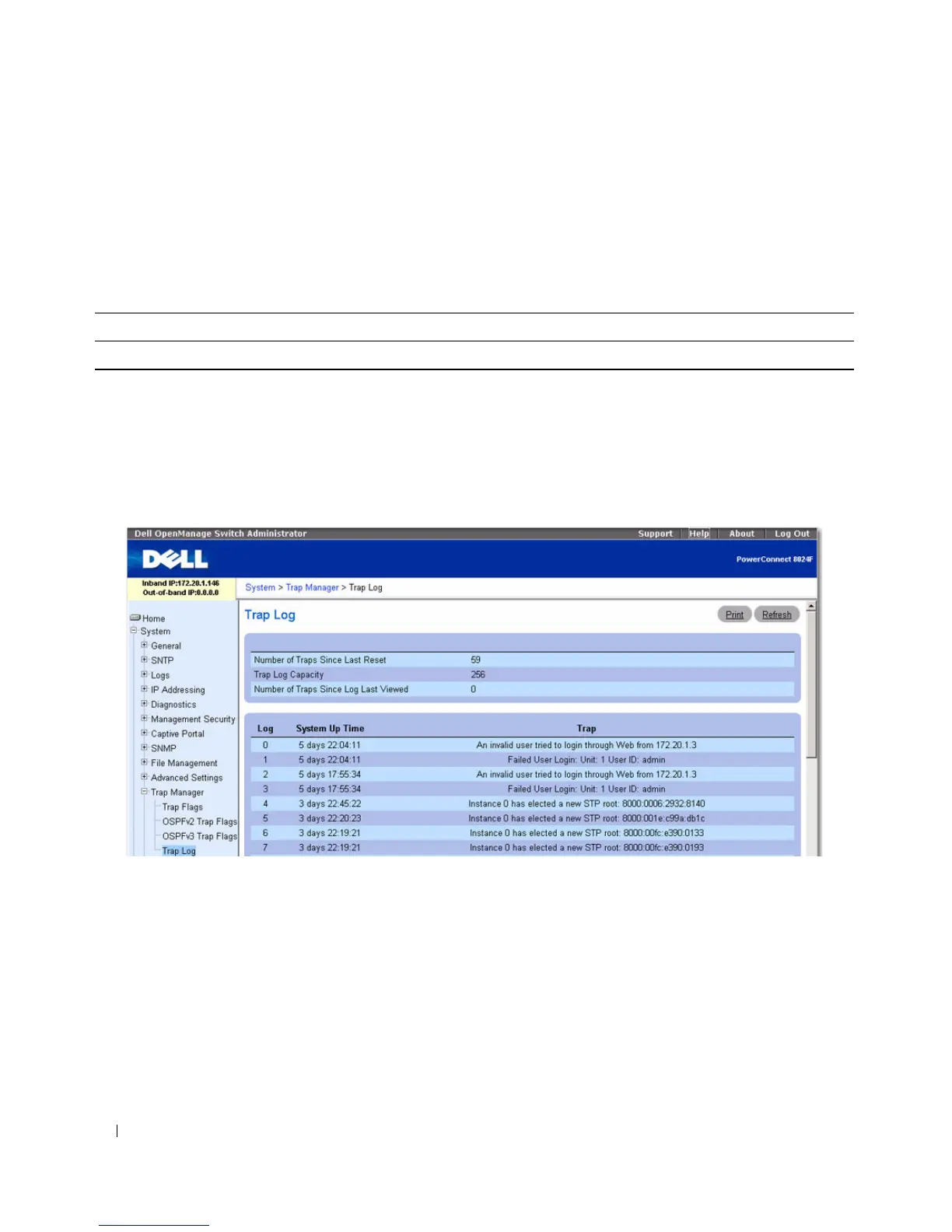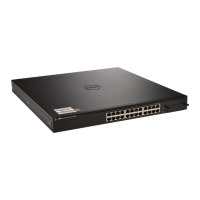244 Configuring System Information
Configuring OSPFv3 Traps Using CLI Commands
For information about the CLI command that performs this function, see the
SNMP Commands
chapter
in the
CLI Reference Guide
. The following table shows the equivalent CLI command you use to
configure OSPFv3 traps.
Trap Log
The Trap Log page is used to view entries that have been written to the trap log.
To access the Trap Log page, click System
→
Trap Manager
→
Trap Log in the navigation tree.
Figure 6-115. Trap Logs
The Trap Log page contains the following fields:
•
Number of Traps Since Last Reset
— The number of traps generated since the trap log entries were
last cleared.
•
Trap L og Capacity
— The maximum number of traps stored in the log. If the number of traps exceeds
the capacity, the entries will overwrite the oldest entries.
•
Number of Traps Since Log Last Viewed
— The number of traps that have occurred since the traps
were last displayed. Displaying the traps by any method (terminal interface display, Web display etc.)
will cause this counter to be cleared to 0.
Table 6-56. OSPFv3 Trap Command
CLI Command Description
snmp-server enable traps ospfv3 Enables OSPFv3 traps.

